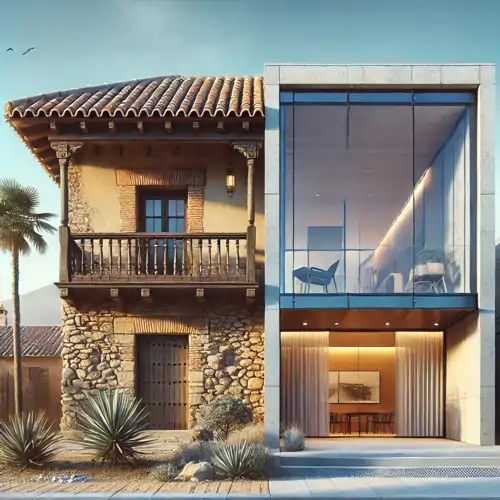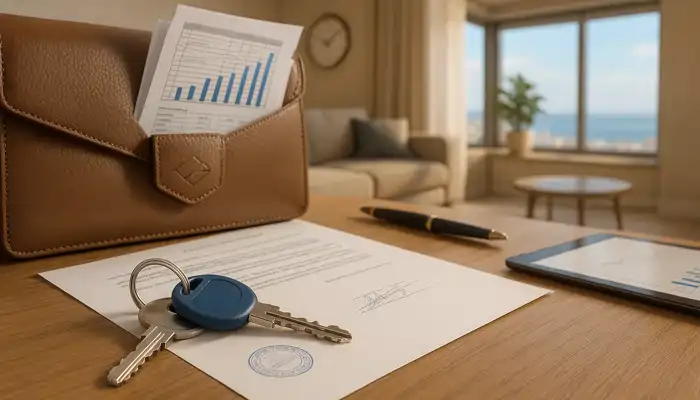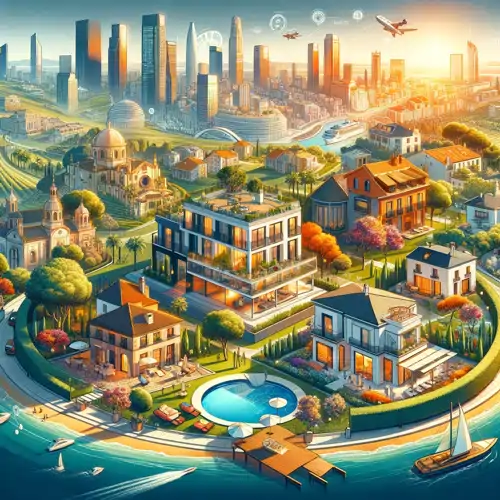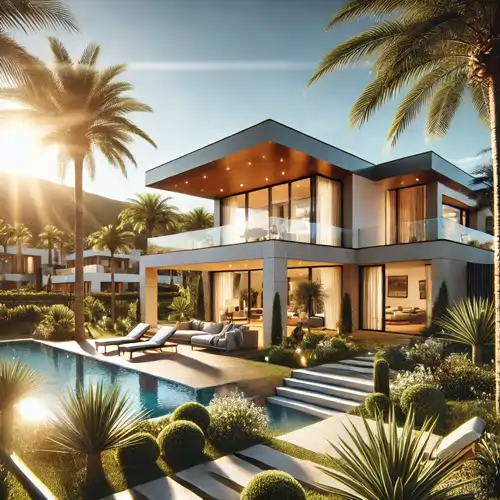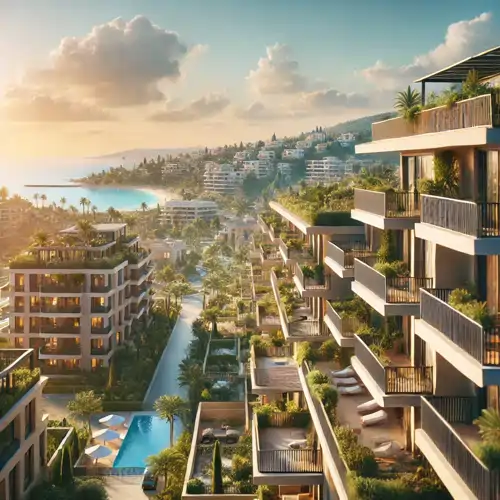When buying real estate in Spain, one of the key issues remains the choice of architectural style. The decision directly influences the level of comfort, operating costs, property liquidity and investment prospects. This article examines the main characteristics of both approaches and offers recommendations for choosing a home that meets actual needs.
1. Main Types of Housing and Layout Features
The Spanish real estate market offers a wide range of properties:
- Bungalow – small wooden houses, often with a veranda or terrace, suitable for summer relaxation. However, the lack of heating can be a serious drawback during cold periods.
- Townhouse (casa adosada) – two-story houses with shared walls, distinguished by spacious living areas and often featuring a small plot of land.
- Penthouse (ático) – apartments on the top floors with high ceilings, panoramic windows and terraces, creating a sense of exclusivity.
- Loft – converted industrial spaces with open layouts, allowing for creative design solutions.
- Cottage (chalet) and traditional villas – spacious houses with elements of historical architecture, characteristic of the southern regions of Spain, where the spirit of the Mediterranean tradition is preserved.
- Urban houses and apartments (piso or apartamento) – properties intended for permanent residence, where the layout is often focused on compactness and optimal space utilization.
Each type of property has its advantages and disadvantages, so the choice depends on the budget, purchase goal and individual preferences.
2. Traditional Architecture: Advantages and Disadvantages
Traditional houses in Spain, such as villas, cortijos and masías, are characterized by the use of local materials (stone, wood, clay tiles) and elements of the Mediterranean style. The main features of traditional housing are:
- Authenticity and historical value. Often these houses have a unique character that reflects the history of the region.
- Climate adaptation. Traditional layouts include interior courtyards (patio) that provide natural ventilation and protection from harsh sunlight.
- Cozy and compartmentalized spaces. The interiors of traditional houses usually consist of small yet functional rooms, creating a homey atmosphere.
The disadvantages can be:
- Limited functionality. Small bedrooms and narrow corridors do not always meet modern comfort requirements.
- High operating costs. A house built with natural materials may require more expensive maintenance and repairs.
- Limited flexibility for remodeling. Due to construction features, it is difficult to make significant changes to the layout without losing the historic appearance.
3. Modern Architecture: Advantages and Challenges
Modern houses and villas are characterized by minimalist design, the use of advanced technologies and open spaces. Their key features are:
- Innovative design. The use of glass, steel and concrete creates a sense of lightness, while large windows provide maximum natural light and panoramic views.
- Energy efficiency and automation. Modern home automation systems and energy-saving technologies help reduce operating costs.
- Spaciousness and functionality. Open layouts create a sense of freedom and allow for optimal use of the living area.
However, modern architecture can also have disadvantages:
- High construction costs. The use of new technologies and expensive materials often results in an increase in property price.
- Dependence on technological support. Complex automation systems require regular maintenance and can be sensitive to malfunctions.
- Lower historical value. Modern construction properties often do not have a unique architectural appearance, which can reduce their appeal for investors interested in the luxury market.
4. Factors to Consider When Choosing a Property
A prospective buyer faces a number of issues and challenges that must be resolved before finalizing the deal. The main aspects to analyze are:
- Purpose of purchase. If the property is intended for permanent residence, it is important to pay attention to functionality and comfort. For investment or rental purposes, preference may be given to properties with high liquidity.
- Budget and operating costs. When choosing between traditional and modern housing, it is necessary to consider not only the purchase price but also subsequent maintenance, repair or modernization costs.
- Regional climatic characteristics. In the southern regions of Spain, where winters can be cold, it is essential to verify the presence of heating, especially in properties such as bungalows, where it is sometimes absent.
- Layout and ergonomics. Modern houses often offer a more rational use of space, while traditional layouts may be less flexible for modifications.
- Legal and financial aspects. Buyers should study in advance the issues of opening a bank account, obtaining a mortgage (loan secured by property) and tax obligations. Incorrect documentation or the choice of an unsuitable agency can lead to serious financial losses. Property purchase is an important stage that requires a detailed analysis of all aspects of the property.
- Property liquidity. It is important to evaluate the prospects of subsequent resale. Properties with modern architecture often enjoy greater demand among foreign buyers, while traditional houses may be attractive to those who appreciate history and authenticity.
5. Recommendations for Decision Making
-
Consult experts. Before buying, it is important to consult with professional architects and real estate agents who can help assess the condition of the property, analyze the layout and determine potential costs for repairs or modernization.
-
Comparative analysis. Create a table of advantages and disadvantages for each option, taking into account personal preferences, financial capabilities and investment goals.
-
Technical condition check. Pay special attention to aspects such as the presence or absence of a heating system, the quality of insulation and the current state of the engineering systems.
-
Legal review. Before signing any contract, carry out a legal review of the property to avoid issues with documentation or ownership disputes.
-
Financial planning. Calculate not only the purchase price but also any potential additional costs (repairs, taxes, maintenance) to avoid future financial surprises.
6. Conclusion
The choice between traditional and modern architecture depends on multiple factors: the purpose of the purchase, the budget, personal taste and the future use of the property. Traditional houses offer a unique historic look and coziness, although they may require additional investments in repairs and modernization. On the other hand, modern properties stand out for their functionality, energy efficiency and cutting-edge technology, but their high cost and technological dependence can be limiting factors.
Understanding all the nuances and carefully examining the condition of the property, along with consulting professionals, will help the buyer make an informed decision that meets their expectations and possibilities. Ultimately, a well-informed decision is based on a balance between aesthetics, practicality and economic viability, which is the key to a successful investment in real estate.
